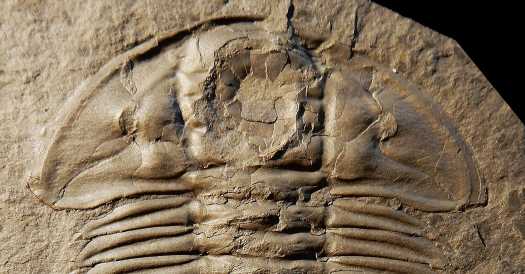
Hundreds of millions of years ago, trilobites filled the ancient seas. Now, their iconic fossils are plucked from shale beds to fill museum shelves and eBay stores, quintessential symbols of the teeming Cambrian Period. There is even at least one newspaper column named for them.
But despite the trilobites’ post-extinction popularity, there is still much we don’t know about their lives. We’re not even quite sure about their diets: While their hardy exoskeletons fossilized easily, the creatures’ guts, which might reveal a last meal, are much harder to find.
Luckily, well-preserved appendages have been discovered for a few species, giving scientists an opportunity to investigate. In a paper published on Wednesday in Proceedings of the Royal Society B, researchers compared some of these appendages with those of a contemporary creature — the horseshoe crab — to figure out how these ancient animals may have hunted and fed.
Horseshoe crabs have a messy but impressive feeding style: Before chowing down on clams and other mollusks, they use their appendages around their mouths to pulverize their shells. (Imagine picking up an unshucked oyster, crushing it between your hands, and stuffing it into your mouth.)
Trilobites “look like a horseshoe crab, and they probably walked like a horseshoe crab,” said Russell Bicknell, a postdoctoral researcher at the University of New England in Australia and the lead author of the paper. He began to wonder, he said, “Did they also eat like a horseshoe crab?”
Dr. Bicknell and his co-authors studied two very different trilobite species with distinct appendage types. The first, Redlichia rex, was one of the largest known trilobites of the Cambrian Period — Frisbee-size in a world of tea saucers. It was “a walking tank,” he said. “A big, bad beastie.” Its appendages were blunt, with wedged protrusions, like the arms of a metal nutcracker.
The second, Olenoides serratus, was smaller, with spines running along its back and sides, Dr. Bicknell said. Its small, rounded appendages were lined with long spikes, like needles in a pincushion.
To figure out how these trilobites may have used their tool kits for eating, Dr. Bicknell and his colleagues turned to finite element analysis, a method that models physical systems virtually. Originally meant for engineers, it is increasingly popular in the life sciences, as researchers use it to better understand anatomies of the past and present.
The researchers ran the analysis on digital reconstructions of the appendages, to figure out how much stress they could handle. For comparison, they did the same for a different ancient arthropod, Sidneyia inexpectans — a known shell-crusher — as well as the horseshoe crab. They then compared the results.
O. serratus, they found, likely did not have the ability to break into shelled creatures — its long spines would have snapped, Dr. Bicknell said. Instead, it likely used those spines to shred detritus and soft prey such as worms, the way we might flake steamed fish apart with a fork.
R. rex, however, was apparently built to crush. According to the analysis, its appendages could withstand more force than those of the horseshoe crab. It may have specialized in consuming shelled prey, including other trilobites, and even other Redlichia, Dr. Bicknell said.
This type of virtual experimentation allows for a deeper look into “the function of anatomical parts that cannot be tested otherwise,” said Karen Moreno, a paleontologist at the Austral University of Chile, who was not involved in the study.
But because certain information — such as a trilobite’s muscle positions or the material properties of its exoskeleton — is unknown and must be approximated, she said, exact measurements and firm conclusions are impossible. Instead, making comparisons with creatures we better understand, like the horseshoe crab, lets experts “search for patterns — approximations that will drive future investigations.”
Asked whether he would like to finally answer some of these questions once and for all — through a time-traveling snorkeling trip, for example — Dr. Bicknell said yes.
“The Cambrian was effectively when arthropods ruled the world,” he said. “It would just be so beautiful to see — beautiful may not be the right word. But interesting.”
Source: Read Full Article
